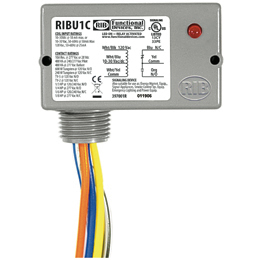140223-2334 EST
ike5547:
So your motion sensor needs to be tested.
But, first, a Triac is similar to a pair of back-to-back SCRs. Thus, looking at the conduction characteristics of and SCR is sufficient to get a basic understanding.
If the gate current to an SCR is zero (the control electrode -- similar to the grid in a thyratron), then there is no conduction between anode and cathode of the SCR for either polarity of the anode to cathode voltage up to a breakdown voltage. However, there is a very small leakage current.
If there is a sufficient forward gate current and sustained, then the SCR anode to cathode looks similar to a diode. Conduction with a small forward voltage drop between anode and cathode when the anode is positive relative to the cathode. And virtually no conduction when the polarity is reversed.
If the gate trigger current is applied as a short pulse some time after a positive voltage is applied to the anode, then until the trigger current pulse occurs there is no anode to cathode current flow, and after the trigger the SCR becomes conductive and remains in this state until the anode-cathode current drops below a low holding current level.
So a sustained positive gate current will keep the SCR continuously conductive so long as the anode is slightly positive relative to the cathode. Just like a mechanical switch was closed.
By putting SCRs back-to-back we get controlled conduction for both polarities. A Triac is an integrated device that performs very much like the back-to-back SCRs, except two different gate drive circuits are not required. A positive gate current to the single gate of the Triac triggers conduction in both directions of the anode-cathode polarity.
Is your motion sensor really a three wire device, or is the third wire simply an EGC wire?
A test to try. Take one sensor. Apply 120 V input. Use pure resistance as the load. Adjust the load to determine an approximate maximum resistance for which conduction occurs. Then try with your contactor load.
I have a Cooper VS306U. This device is a three wire device and sounds like it has a relay output. I have not opened it yet. The sensor works fine with a 5 K resistive load. Then I tried a very small Potter & Brumfield relay. It produced the results you experienced. If the output contact is an electromechanical relay, then turn off of the inductive load may not occur at a current zero crossing, and a large inductive transient might occur that would retrigger the on function. It is late and I will look at it more tomorrow.
Your other question I will answer tomorrow.
.


